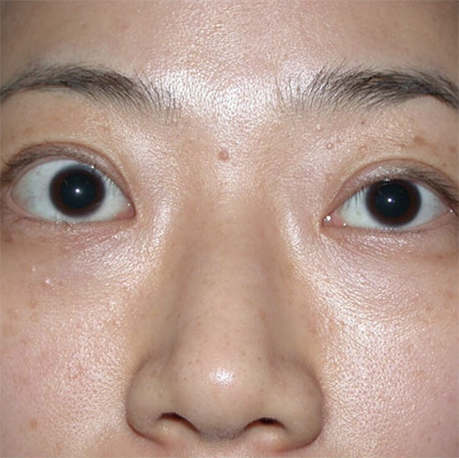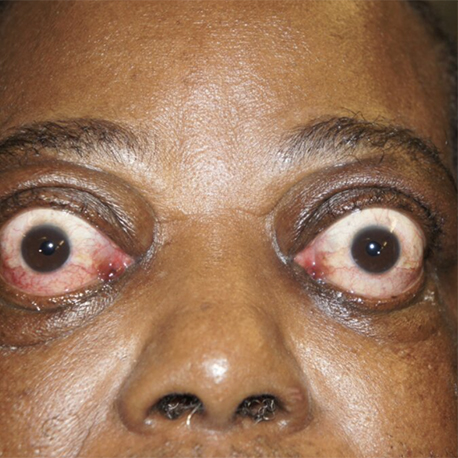Portions of this overview on TED have been previously published:
Dolman, PJ, Grading severity and activity in thyroid eye disease. Ophthal Plast Reconstruct
Surg
2018;34: (4S), S34-S40

Thyroid eye disease (TED), also known as Graves’ Orbitopathy, is an orbital inflammatory disorder that is associated with thyroid autoimmune diseases and causes expansion and scarring of orbital fat and striated muscle. Although it is self-limited, TED may significantly impact cosmesis, vision, and quality of life.
TED is the most common orbital disease globally, with a prevalence estimated between 0.5%–2%, and with females outnumbering males by 5:1. It usually occurs between the second and sixth decade and involves all races.
Between 25 – 50% of patients with immune thyroid diseases develop orbital involvement, and of those, 5 – 10% may develop more severe consequences such as severe inflammation and congestion, impaired motility, or compressive optic neuropathy.
Risk factors for developing TED include a positive family history, smoking, life stressors, and poorly controlled hypothyroidism following radioactive iodine. Predictors for more serious involvement by TED include male gender, increasing age, smoking, and a rapid onset of orbitopathy.
Cigarette smoking is strongly correlated with both the development of TED and with its severity.

A smaller percentage may develop Graves’ lower limb dermopathy (pretibial myxedema, with deposition of subdermal hyaluronic acid), usually 1-2 years following the onset of thyroid gland dysfunction and shortly following severe orbitopathy, and a smaller subset may develop acropachy (“clubbing” or thickening of the tips of the fingers and nail beds).
Patients with TED have an increased probability of developing associated immune diseases, including superior limbic keratitis (SLK), myasthenia gravis, diabetes mellitus, alope cia, and vitiligo.

